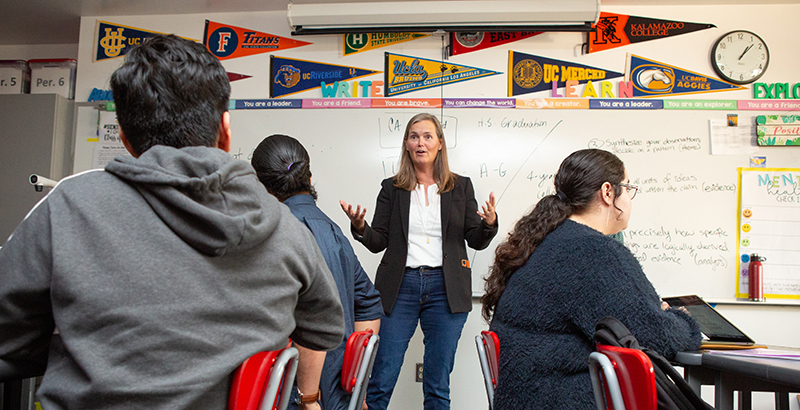Chatterji: From AP to IB to Dual Enrollment, There’s a Troubling Racial Gap in Access to Advanced HS Courses. Here Are Some Ways to Close it

Get stories like this delivered straight to your inbox. Sign up for The 74 Newsletter
This essay originally appeared on the FutureEd blog.
Amid back-to-school debates over vaccinations, mask requirements and the right lens for learning history, the troubling lack of opportunities for many high school students to take advanced coursework they need for success in college and beyond has unfortunately fallen off the education policy radar.
Advanced coursework can include International Baccalaureate, dual high school-college enrollment or Advanced Placement courses, with AP being the most popular and widely available mechanism. Taking such courses helps students gain college credits while still in high school, earn admission to top colleges and flourish in the work world.
Yet a recently released report from the Center for American Progress found that Black, Indigenous and rural students were far more likely to attend schools offering fewer AP courses than schools attended by their white, Asian and suburban counterparts.
And even when students have similar access to AP courses, lower percentages of Black, Indigenous and rural students enroll in the courses and pass them. In high schools offering 18 or more AP courses, white students taking at least one AP exam had an average passing rate of 72 percent. For Black students in these circumstances, the average passing rate was 42 percent. Latino students are not experiencing the same gaps in access as other ethnic and racial groups, but they do have lower enrollment and pass rates.
This speaks to what many educators and advocates already understand: Equitable access and success in advanced coursework require more than availability, and there are policy investments that schools and districts can leverage to help students succeed in advanced courses.
The first is creating a national database on student participation and performance in advanced coursework (including dual-enrollment courses offered at local universities), disaggregated by race. Currently, no comprehensive national dataset exists for multiple dual enrollment options, and individual state report cards vary greatly in what is publicly reported.
Much of the research on advanced coursework, by default, is limited to AP participation and performance, because that is the only data that is easily aggregated, transparent and comparable among all 50 states and Washington, D.C. Future iterations of the U.S. Department of Education’s Civil Rights Data Collection should also report on IB and dual-enrollment participation and performance.
Another crucial investment is to remove entry barriers to AP and other advanced courses. Bias and subjective gatekeeping measures have a way of creeping into the enrollment process for advanced courses through overreliance on teacher referrals or counselor recommendations. This often results in students being overlooked for enrollment in gifted-and-talented programs at the elementary school level and AP classes at the high school level.
Districts have succeeded in combating this through the use of universal screening for gifted-and-talented programs and automatic-enrollment or academic-acceleration policies for AP courses. Automatic-enrollment policies, recently enacted in several states, require that students who meet benchmark proficiency levels on statewide examinations be automatically enrolled in the next-highest available class, including advanced courses, though they can opt out.
In addition to making sure students are properly identified for enrollment in advanced courses, it is important to ensure they are prepared to handle the content and demands of the coursework. That takes regular communication and lesson planning among elementary, middle and high school educators to map out common instructional vocabulary and concepts, known as vertical collaboration.
Moreover, supporting students and teachers during their experiences in advanced courses is critical. One strategy that many states and districts embrace is to reduce or eliminate fees associated with taking an AP or IB exam. Additionally, some schools are experiencing success through creating mentor programs, where junior and senior AP students advise and tutor younger high school students to make sure they are setting themselves up for success.
Finally, both teachers and students benefit immensely from the creation of regional and statewide peer-learning communities. This can take different forms but usually involves time outside the regular school day when students and teachers can refine their skills, learn from experts and get real-time feedback on teaching and learning.
None of these strategies alone can surmount the stubborn and persistent inequities in participation and success in AP courses. But when done in concert and with dedicated leadership, they can help broaden access to and success in advanced coursework.
Roby Chatterji is a senior policy analyst for K-12 education at the Center for American Progress.
Get stories like these delivered straight to your inbox. Sign up for The 74 Newsletter

;)